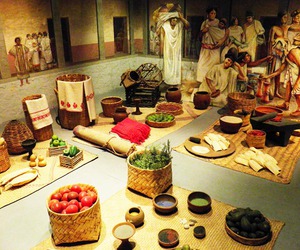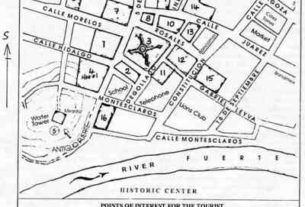Mexican History

© Anthony Wright, 2013
The Nahuatl language and culture of the Aztecs of central Mexico are among the best-documented sources of information we have for understanding the indigenous peoples of the Americas.
Aztec society was abruptly interrupted and brought to an untimely end by the Spanish invasion and conquest of Mexico-Tenochtitlan in 1521. Nevertheless, it is from this very early stage of the Spanish Colonial Period that we have some of the most intriguing and yet controversial and difficult documents in Nahuatl — the language of Tenochtitlan at the time of the Conquest. This abundance of documentary evidence is due to Franciscan friars who set about to indoctrinate the survivors or their offspring into the Christian faith.
To assist in the conversion of the natives, the friars set about very early collecting information on Aztec culture, especially religion, and to that end a school was set up at Tlatelolco. The Cantares Mexicanos and the Romances de los señores de la Nueva España are two collections of lyrical poems in Nahuatl that date from this early period.
These song-poems were performed to some kind of musical accompaniment. Some scholars believe they were composed by “poet-kings” prior to the Conquest, while others are equally convinced the poems were all written after the Conquest by survivors longing for the return of the good old days before the Spaniards came.
These Nahuatl poems are written in the Roman transcription as taught by the Franciscans. From a date on one of the manuscripts, it is evident that in their present written form they date from a period shortly after the fall of the Aztec empire. But therein lies the question of their authenticity.
The Mexican scholars A. Garibay and M. Leon-Portilla have argued that the Nahuatl poems of the Cantares and the Romances are authentic pre-Conquest compositions by historically verifiable “poet-kings.” Opponents of Garibay and Leon-Portilla, such as G. Payas, A Segal, J. Bierhorst and others, take the opposite point of view. Basically they argue that, if the poems were composed prior to the Conquest, they could not have been preserved in their present written form because writing in Roman transcription did not exist before the Spanish Conquest. J. Bierhorst, for example, assumes that all the Nahuatl song-poems were put together in their present form no later than 1528, the date on the Pomar Ms (a document associated with the Romances), although he admits the possibility of heavy “borrowing” from a”Apre-Conquest repertory.”
Some of the poems are attributed to the “poet-kings” whose names appear in the poems, names such as Nezahualcoyotl, Cuacuauhtzin, Axayacatl and others. Reference is made to other pre-Conquest personages and events. In one poem (Romances) the author appears to be referring to himself: “I am Nezahualcoyotl, I am the singer” (non Nezahualcoyotzin, ni cuicanitl). However, this well-known gentleman lived from 1402 to 1472, years before writing in Roman transcription was introduced into Mexico. Critics of the Garibay/Leon-Portilla interpretation of Nahuatl literature therefore ask how we can possibly have a poem “written” by Nezahualcoyotl himself.
In Pre-Columbian Literatures of Mexico (1969, pg. 80) Leon-Portilla refers to “Temilotzin’s Poem,” which was purportedly composed by an Aztec warrior who is said to have fought the Spaniards and survived the fall of Tenochtitlan. He subsequently killed himself rather than surrender. He lived from about the end of the 15th century until 1525, some four years after the fall of Tenochtitlan. It is possible therefore that he lived close enough to the time of the recording of the poems in the Cantares and Romances for us to have a more or less accurate version of his original composition. However, the question still remains: under what circumstance was it written down, since we would have to assume that Temilotzin himself was highly unlikely to have found time to learn how to write while fighting off the Spaniards.
Garibay was severely criticized for comparing Nahuatl literature, in particular the poems of the Cantares and Romances, to Classical Greek and Roman literature. Leon-Portilla has, in turn, been accused of mistranslating or rearranging the sometimes garbled and difficult to read texts in order to fit his preconceived concept of Aztec civilization. Some critics have gone so far as to accuse Garibay of having actually created a pre-Hispanic past for the Aztecs by doctoring the original texts to give them the appearance of a more sophisticated literary or “classical” appearance. G. Payas, a particularly vocal critic of the Garibay/Leon-Portilla interpretation of the Nahuatl song-poems, declares that when Garibay was translating these texts he was actually “…creating a literature for this great civilization.” If Payas and others are right, we have a much skewed picture of the ancient Aztecs and the history books need to be rewritten.
Until fairly recently the study of “native” oral literature in the Americas was under the heading of linguistic anthropology. Anthropologists, however, were more interested in the cultural aspects of recorded texts in indigenous languages than in their literary merit. Therefore, one of Garibay’s merits was to place the Nahuatl texts in the context of world literature.
What is “literature” anyway? In a non-traditional culture, such as our own, there is little agreement on what constitutes literature or a “classic.” Obviously not all writing can be regarded as literature. The style and content of technical, scholarly or journalistic writing are quite different from a literary novel, just as lyric poetry differs from epic poetry in form and content. The Dialogues of Plato and the King James Version of the Bible would qualify as poetical or literary prose. Gibbons Decline and Fall of the Roman Empire is described as a special form of rhetoric based on Greek and Latin models. Not all verse is poetry — bawdy limericks of a sexual nature are very quotable verses but would not be considered as literature by many people. As in Nahuatl narrative, the speeches in such Latin historians as Livy, Tacitus, Sallust, and Ammianus Marcellinus, show a strong rhythmic pattern. Obviously the definition of “literature” is broad enough to include compositions in Nahuatl.
Garibay divides the Nahuatl poems of the Cantares and Romances into literary genres: Songs of the Eagles, Songs of War, and the like. The main themes include the brevity and uncertainty of life, along with the concept of some kind of divine intervention in human affairs (e.g. Ipalnemohuani, “He through whom all things live”). War themes run throughout the poems. The Aztecs waged war not only for imperialistic gain but as a kind of religion. They glorified war and made it appear beautiful through metaphors and flowery epithets. Through the symbolic use of flowers, precious stones (especially green jade), and feathers of many beautiful colors (e.g. quetzal) they expressed the traditions of their culture.
Garibay has many useful observations on the elaborate style of the Nahuatl song-poems, for example the use of “difrasismo” or double phrases, such as in huehuetl in ayacachatli (“the drum and the rattle = popular music”). However, he goes too far when he states that (in his opinion, granted) Nahuatl is stylistically superior to classical Greek. While Nahuatl compositions show a highly elaborate rhetorical style, they cannot be compared with the almost infinite variety of complex and precise metrical patterns in classical Greek poetry.
However, he is right in affirming that even prose passages can have a definite rhythmical pattern, as the poetical prose in Book 6 of the Florentine Codex of Sahagún amply illustrates. The apparently meaningless syllables, ayya, ayahue, ohuaya, etc., that appear here and there in the poems represent the lost musical accompaniment of the drum or other musical instruments to which the song-poems were performed, most likely involving dancing as well. Greek lyric poetry too was originally sung to the lyre.
Garibay also recognized the existence of dramatic performances and accordingly rearranged texts of the Cantares to look more like drama with different speakers and even a chorus. In this regard, A. Segala and other critics point out, quite rightly, that there is little or no evidence for this in the original manuscripts.
Contrary to the views of opponents of the Garibay/Leon-Portilla “flower and song” interpretation of Nahuatl literature, the Aztecs did indeed have a highly evolved and sophisticated form of literature — by any definition of the term — prior to the Spanish Conquest. Obviously, the written form of Cantares and Romances precludes a pre-Conquest origin. However, the Aztecs had a highly developed system of education in the calmecac, the Nahuatl center of higher education, where, with the aid of the painted codices, students were well-equipped to preserve and accurately pass on their history, traditions, religion, and literature.
The charge by G. Payas and others that Garibay “created” a literature through translation is demonstrably false and smacks of professional jealousy or even incompetence rather than scholarship. However, if the poems were actually composed by the historical “poet-kings” to whom they are attributed, we still have to explain how they found their way into the written form we have today. There are some possible explanations which we shall explore later.

